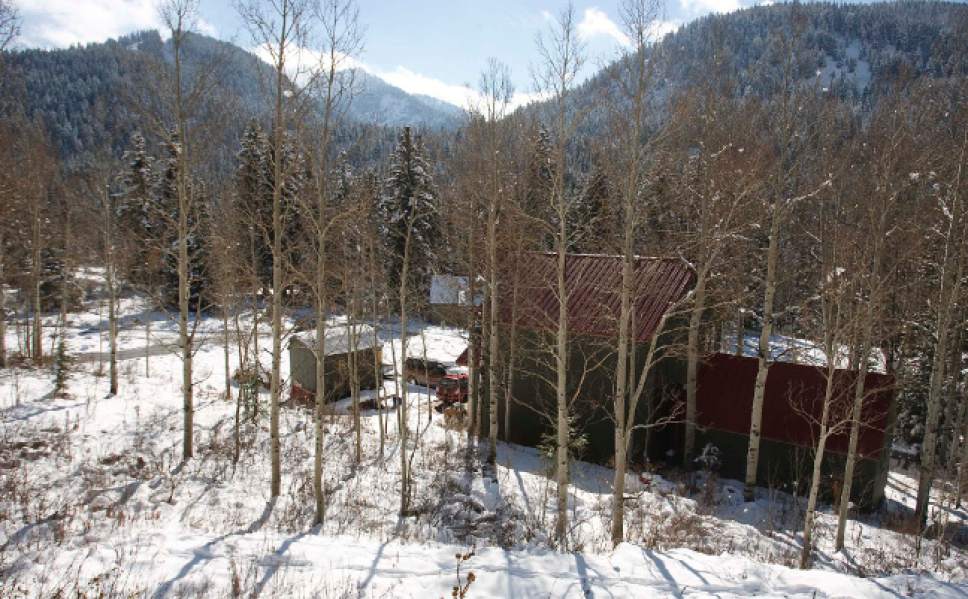This is an archived article that was published on sltrib.com in 2017, and information in the article may be outdated. It is provided only for personal research purposes and may not be reprinted.
How far should a building be from a stream channel in many of Salt Lake County's canyons?
Fifty feet? A hundred?
More than any other issue, this question about stream setbacks arose most frequently Tuesday evening, when the County Council held public hearings on proposed revisions to the Foothills and Canyons Overlay Zone (FCOZ) ordinance and the creation of a new Mountain Resort Zone for ski areas.
Three-dozen speakers approached the podium to address various aspects of the proposed ordinances, more than five years in the making.
Barbara Cameron, of the Big Cottonwood Community Council, which primarily comprises residents in the Silver Fork area, pleaded with the council to rescind one change that would let developers plant trees with smaller diameters than now are required to replace any removed for a construction project.
Joshua Lenart from the Utah chapter of Backcountry Hunters and Anglers asked that the FCOZ ordinance be tailored to protect the flora, fauna and habitat vital to deer, moose, elk and other wildlife inhabiting the central Wasatch Range.
And Ed Marshall and Will McCarvill talked about the need for balance, though they came from much different directions.
"I would be willing to have the County Council adopt the FCOZ ordinance just as it has been presented to them by the Planning staff and the Planning Commissions, with its 45 pages of strict regulations and no futher compromises," Marshall said in a written statement.
But to McCarvill, a Salt Lake City representative of the Sierra Club, the balance already has been overreached with existing canyon development. With more compromise, "natural values will be degraded from where they are now," he said, arguing that instead of "encouraging development that conforms," FCOZ should "require development to conform."
Their arguments involved, in part, the stream-setback issue. The existing FCOZ ordinance, drafted in the mid-1990s, required a 100-foot separation between a building and a stream channel.
That distance was at odds with requirements of the federal Clean Water Act, state stormwater-pollution-prevention regulations and county Health Department rules, all of which accepted 50-foot setbacks.
Nevertheless, planning staffer Curtis Woodward said the Planning Commission members who drafted the ordinance felt more comfortable with the broader, 100-foot separation for the betterment of wildlife, flood control and water quality.
Crowd reaction to that assessment was mixed, although more speakers advocated the 100-foot setback than the 50-foot plan.
Anna Rasmussen, a University of Utah doctoral student from Cottonwood Heights, said it's paramount for the County Council to do whatever it can to protect water quality in the canyons — and a wider setback would accomplish that.
But Tracy Giles, a resident of Wasatch Canyon Resort in lower Little Cottonwood Canyon, said he once had a "horrible experience" trying to satisfy FCOZ's setback requirements, leading to more environmental damage by forcing landowners to move structures farther up hillsides and to remove trees.
His neighbor Christie Brown argued against more restrictive measures that would "make it impossible for small, humble people to do things up there."
By contrast, Howie Garber, of Utah Physicians for a Healthy Environment, said a 300-foot setback may be best to preserve what the Wasatch Mountains have to offer.
"There are only a couple of cities in the world with 7,000 feet of vertical relief next to a city with a million people," he said. "What we have is so unique. I'm asking you to strengthen the land-use ordinances."
Council members have not set a timetable for acting on the ordinances, which Republican Chairman Steve DeBry called "the most complex, vital issue that I've had the opportunity to be involved with" during his six years on the council.
Democratic Councilwoman Jenny Wilson added that she expects "to regroup next week and determine the next steps," vowing "to try not to let it drag on too long."
But she also noted that interested people may still submit comments. DeBry suggested emails should be sent to cwoodward@slco.org.
Editor's note: This article has been altered from the original to clarify the views of Ed Marshall.



